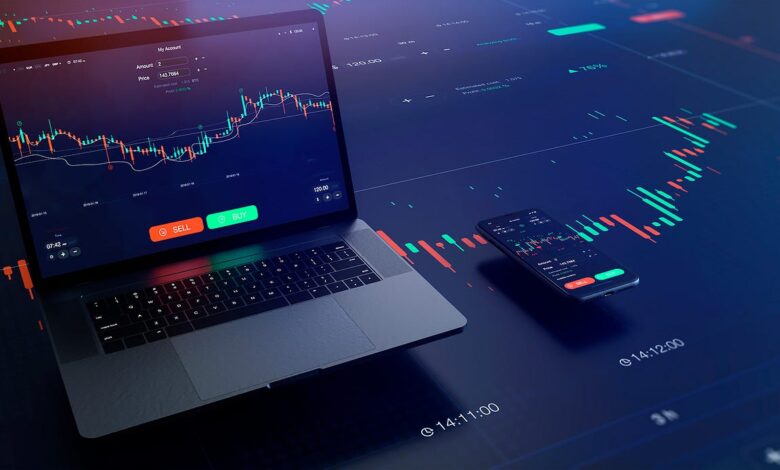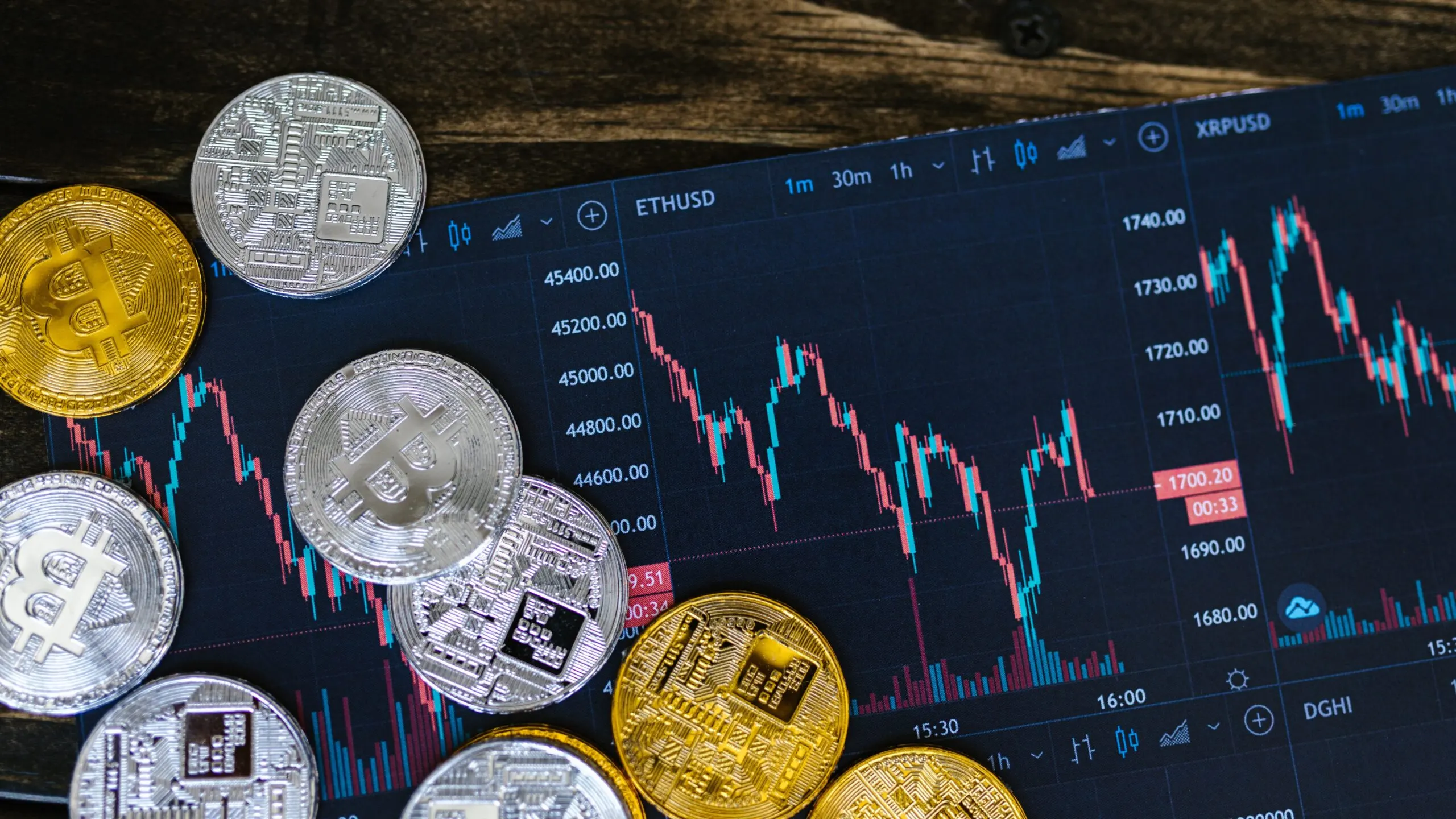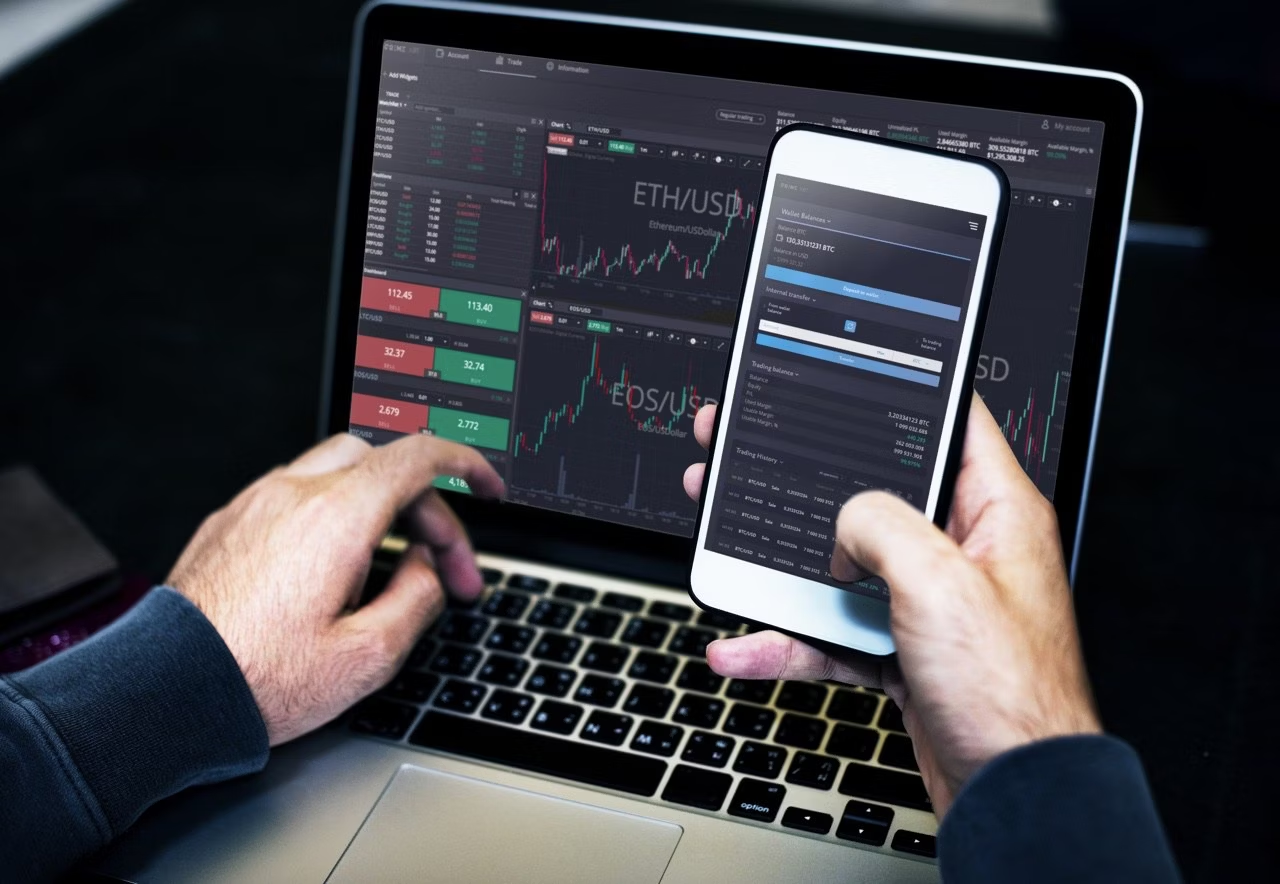Best Crypto Trading Platform 2025 Complete Guide to Digital Asset Trading

Choosing the right crypto trading platform is crucial for anyone looking to enter the world of digital asset trading. With over 500 cryptocurrency exchanges operating globally, finding a reliable and feature-rich crypto trading platform can feel overwhelming. Whether you’re a beginner taking your first steps into cryptocurrency or an experienced trader seeking advanced tools, the platform you choose will significantly impact your trading success and security.
A quality crypto trading platform serves as your gateway to the digital asset ecosystem, offering access to hundreds of cryptocurrencies, advanced trading tools, and secure storage solutions. The best platforms combine user-friendly interfaces with institutional-grade security, competitive fees, and comprehensive customer support. In this guide, we’ll explore everything you need to know about selecting and using a crypto trading platform that meets your specific needs and trading goals.
What is a Crypto Trading Platform
A crypto trading platform is a digital marketplace where users can buy, sell, and trade cryptocurrencies. These platforms act as intermediaries between buyers and sellers, providing the infrastructure necessary for secure and efficient cryptocurrency transactions. Unlike traditional stock exchanges, crypto trading platforms operate 24/7, allowing users to trade digital assets at any time.
Most crypto trading platforms offer two primary services: exchange functionality and wallet services. The exchange component enables users to convert fiat currencies (like USD or EUR) into cryptocurrencies or trade between different digital assets. The wallet component provides secure storage for users’ cryptocurrency holdings, though many experienced traders prefer using external hardware wallets for enhanced security.
Modern crypto trading platforms have evolved far beyond simple buy-and-sell functionality. They now offer sophisticated trading tools, including advanced charting software, algorithmic trading options, margin trading, futures contracts, and even decentralized finance (DeFi) integration. This evolution has transformed crypto trading platforms into comprehensive financial ecosystems.
Key Features to Look for in a Crypto Trading Platform
Security and Regulation
Security should be your top priority when selecting a crypto trading platform. Look for platforms that implement industry-standard security measures, including two-factor authentication (2FA), cold storage for funds, SSL encryption, and regular security audits. Regulatory compliance is equally important, as it provides additional protection and legitimacy.
The most secure platforms store the majority of user funds in offline cold storage, keeping only a small percentage in hot wallets for immediate trading needs. They also maintain insurance policies to protect user funds in case of security breaches. Additionally, reputable platforms undergo regular third-party security audits and maintain transparent security practices.
Trading Fees and Cost Structure
Fee structures vary significantly across crypto trading platforms, and understanding these costs is essential for profitable trading. Most platforms charge trading fees as a percentage of your transaction value, typically ranging from 0.1% to 1% per trade. Some platforms offer tiered fee structures based on trading volume, rewarding high-volume traders with reduced fees.
Beyond trading fees, consider other costs such as deposit and withdrawal fees, conversion fees for fiat currencies, and potential inactivity fees. Some platforms offer fee discounts when you pay using their native tokens, which can lead to significant savings for active traders.
Available Cryptocurrencies and Trading Pairs
The number and variety of supported cryptocurrencies vary dramatically between platforms. While major platforms typically support hundreds of cryptocurrencies, smaller exchanges may only offer the most popular coins like Bitcoin, Ethereum, and a few altcoins. Consider your trading strategy and ensure your chosen platform supports the cryptocurrencies you want to trade.
Trading pairs are equally important, as they determine which cryptocurrencies you can directly exchange. Platforms with extensive trading pair options provide more flexibility and potentially better pricing through direct conversions rather than multiple transactions.
User Interface and Trading Tools
A well-designed user interface can significantly impact your trading experience, especially for beginners. Look for platforms that offer both simple and advanced interfaces, allowing you to start with basic functionality and gradually access more sophisticated tools as your experience grows.
Advanced trading tools should include real-time charts, technical analysis indicators, order types (market, limit, stop-loss), and portfolio management features. Some platforms also offer mobile apps with full functionality, enabling you to trade on the go.
Top Types of Crypto Trading Platforms

Centralized Exchanges (CEX)
Centralized exchanges are the most common type of crypto trading platform, operating similarly to traditional stock exchanges. These platforms maintain control over user funds and order matching, providing high liquidity and fast transaction processing. Popular centralized exchanges include Binance, Coinbase, and Kraken.
The main advantages of centralized exchanges include user-friendly interfaces, high liquidity, customer support, and regulatory compliance. However, users must trust the platform with their funds, and these exchanges are potential targets for hackers due to their centralized nature.
Decentralized Exchanges (DEX)
Decentralized exchanges operate on blockchain networks without a central authority, allowing users to trade directly from their wallets. DEX platforms use smart contracts to facilitate trades, eliminating the need for intermediaries. Popular DEX platforms include Uniswap, SushiSwap, and PancakeSwap.
DEX platforms offer enhanced privacy, reduced counterparty risk, and true ownership of funds. However, they typically have lower liquidity, higher transaction costs due to blockchain fees, and less user-friendly interfaces compared to centralized platforms.
Peer-to-Peer (P2P) Platforms
P2P crypto trading platforms connect buyers and sellers directly, allowing them to negotiate prices and payment methods. These platforms often support local payment methods and provide escrow services to ensure secure transactions. Examples include LocalBitcoins and Paxful.
P2P platforms excel in regions with limited banking infrastructure and offer greater privacy and payment flexibility. However, they may have less liquidity, longer transaction times, and require more careful counterparty evaluation.
How to Choose the Best Crypto Trading Platform
Assess Your Trading Needs
Before selecting a crypto trading platform, honestly assess your trading goals, experience level, and specific requirements. Beginners might prioritize ease of use and educational resources, while experienced traders may focus on advanced tools and low fees. Consider factors such as your intended trading frequency, preferred cryptocurrencies, and desired payment methods.
Your geographical location also plays a crucial role, as some platforms have regional restrictions or offer different features in various countries. Ensure your chosen platform fully supports users in your jurisdiction and provides local payment methods when possible.
Research Platform Reputation and Reviews
Thoroughly research potential platforms by reading user reviews, checking social media presence, and examining their track record. Look for platforms with strong reputations, transparent operations, and positive user feedback. Be wary of platforms with numerous complaints about fund withdrawals, poor customer service, or security issues.
Check independent review sites, cryptocurrency forums, and social media platforms for honest user experiences. Pay particular attention to how platforms handle customer issues and whether they maintain active, helpful customer support channels.
Test Platform Features
Many crypto trading platforms offer demo accounts or small minimum deposits, allowing you to test their features before committing significant funds. Take advantage of these opportunities to evaluate the platform’s interface, execution speed, and overall user experience.
Start with small transactions to test deposit and withdrawal processes, customer support responsiveness, and trading functionality. This hands-on evaluation will help you identify any potential issues before investing larger amounts.
Security Best Practices for Crypto Trading Platforms
Account Security Measures
Protecting your crypto trading platform account requires multiple layers of security. Always enable two-factor authentication (2FA) using an authenticator app rather than SMS, as phone numbers can be compromised through SIM swapping attacks. Use strong, unique passwords and consider using a password manager to generate and store complex passwords securely.
Regularly monitor your account activity and set up email or SMS notifications for all account activities, including logins, trades, and withdrawals. This allows you to quickly identify and respond to any unauthorized access attempts.
Fund Management Strategies
Never store large amounts of cryptocurrency on any trading platform longer than necessary. Use the platform for trading activities, but move significant holdings to secure hardware wallets or other cold storage solutions. This approach minimizes your exposure to exchange hacks and platform failures.
Consider diversifying across multiple platforms if you maintain substantial cryptocurrency holdings. This strategy reduces concentration risk and ensures you maintain access to trading even if one platform experiences issues.
Withdrawal and Transfer Protocols
Establish clear protocols for withdrawing funds from your crypto trading platform. Always double-check withdrawal addresses, start with small test transactions for new addresses, and maintain a whitelist of trusted addresses when possible. Some platforms offer address whitelisting features that prevent withdrawals to unauthorized addresses.
Set up withdrawal notifications and consider using platforms that offer withdrawal delays, giving you time to cancel unauthorized transactions. These features provide additional security layers against potential account compromises.
Understanding Trading Fees and Costs
Maker vs. Taker Fees
Most crypto trading platforms use a maker-taker fee model, where makers (who provide liquidity by placing limit orders) pay lower fees than takers (who remove liquidity by executing market orders). Understanding this distinction can help you optimize your trading costs by using limit orders when possible.
Maker fees typically range from 0.05% to 0.25%, while taker fees range from 0.1% to 0.5%. Some platforms offer zero fees for makers to encourage liquidity provision, making limit orders an attractive option for cost-conscious traders.
Volume-Based Discounts
Many platforms offer tiered fee structures based on your 30-day trading volume. Higher-volume traders receive progressively lower fees, which can result in significant cost savings for active traders. Some platforms also offer additional discounts when you hold their native tokens or achieve certain VIP levels.
Calculate your expected trading volume and compare fee structures across platforms to identify the most cost-effective option for your trading patterns. Remember to factor in all costs, not just trading fees, when making comparisons.
Hidden Costs and Additional Fees
Beyond trading fees, crypto trading platforms may charge various additional fees that can impact your overall costs. These include deposit fees (especially for credit card deposits), withdrawal fees, conversion fees for fiat currencies, and spread costs on market orders.
Some platforms charge inactivity fees for dormant accounts, while others may have minimum withdrawal amounts or fixed withdrawal fees regardless of transaction size. Carefully review all fee schedules and terms of service to understand your total cost of trading.
Mobile Trading and Platform Accessibility

Mobile App Features and Functionality
Modern crypto trading platforms recognize the importance of mobile accessibility, offering comprehensive mobile apps that provide full trading functionality. The best mobile apps include real-time price alerts, advanced charting tools, multiple order types, and seamless synchronization with desktop platforms.
Look for mobile apps that offer biometric authentication, offline portfolio tracking, and push notifications for price movements and account activities. Some platforms also provide exclusive mobile features, such as simplified trading interfaces for beginners or mobile-specific promotions.
Cross-Platform Synchronization
Effective cross-platform synchronization ensures your trading experience remains consistent whether you’re using desktop, mobile, or web interfaces. Your watchlists, trading preferences, and portfolio data should sync seamlessly across all devices, allowing you to switch between platforms without interruption.
Advanced platforms offer cloud-based synchronization of custom indicators, trading strategies, and chart layouts, ensuring your personalized trading environment follows you across devices. This feature is particularly valuable for active traders who switch between different devices throughout the day.
Customer Support and Platform Reliability
Support Channel Availability
Reliable customer support is crucial when dealing with financial platforms, especially in the 24/7 cryptocurrency market. Look for platforms that offer multiple support channels, including live chat, email, and phone support. The best platforms provide round-the-clock support with reasonable response times.
Evaluate the quality of support by checking response times, problem resolution rates, and the availability of support in your preferred language. Some platforms offer priority support for high-volume traders or premium account holders.
Platform Uptime and Performance
Platform reliability directly impacts your ability to execute trades, especially during high volatility periods when quick action may be necessary. Research historical uptime statistics and user reports about platform performance during market stress events.
Consider platforms that offer status pages with real-time information about system performance and planned maintenance. Some platforms also provide compensation for trading losses caused by platform downtime, demonstrating their commitment to reliability.
Advanced Trading Features
Algorithmic and Automated Trading
Many modern crypto trading platforms support algorithmic trading through APIs or built-in automation tools. These features allow experienced traders to implement systematic trading strategies, execute trades based on technical indicators, or maintain portfolios through rebalancing algorithms.
API access enables integration with third-party trading bots and portfolio management tools, expanding your trading capabilities beyond the platform’s native features. Some platforms also offer built-in trading bots with pre-configured strategies for various market conditions.
Margin Trading and Derivatives
Advanced crypto trading platforms often provide margin trading and derivatives products, allowing traders to leverage their positions and implement sophisticated trading strategies. These features include futures contracts, options, perpetual swaps, and leveraged spot trading.
While these tools can amplify potential profits, they also significantly increase risk and require a thorough understanding before use. Ensure any platform offering these features provides adequate risk management tools and educational resources
Licensing and Regulatory Status
The regulatory landscape for crypto trading platforms varies significantly across jurisdictions, and compliance requirements continue to evolve. Choose platforms that maintain proper licensing in their operating jurisdictions and demonstrate commitment to regulatory compliance.
Regulated platforms often provide additional consumer protections, including segregated customer funds, regular audits, and compliance with anti-money laundering (AML) and know-your-customer (KYC) requirements. While these requirements may seem burdensome, they provide important protections for users.
Tax Reporting and Compliance Tools
Many crypto trading platforms now offer integrated tax reporting tools to help users comply with local tax obligations. These tools can generate transaction reports, calculate capital gains and losses, and integrate with popular tax software solutions.
Consider platforms that provide comprehensive transaction histories, cost basis tracking, and support for various tax accounting methods. These features can significantly simplify tax preparation and ensure compliance with local regulations.
Future Trends in Crypto Trading Platforms
Integration with Traditional Finance
The line between traditional financial services and crypto trading platforms continues to blur, with many platforms adding features like bank account integration, credit card support, and even traditional investment products.
This integration makes cryptocurrency more accessible to mainstream users. Future developments may include direct integration with banking systems, automated savings and investment features, and comprehensive financial planning tools that incorporate both traditional and digital assets.
Artificial Intelligence and Machine Learning
AI and machine learning technologies are increasingly being integrated into crypto trading platforms to provide enhanced user experiences, improved security, and advanced trading tools. These technologies enable features like predictive analytics, personalized trading recommendations, and automated risk management. Future platforms may offer AI-powered portfolio optimization, sentiment analysis integration, and advanced pattern recognition tools that help traders identify market opportunities and manage risk more effectively.
Also Read: Cryptocurrency Trading Platform Comparison 2025 Top 10 Exchanges Reviewed
Conclusion
Selecting the right crypto trading platform is a critical decision that will impact your entire cryptocurrency trading journey. The best platform for you depends on your specific needs, experience level, and trading goals. Whether you prioritize low fees, advanced features, security, or user-friendly interfaces, there’s a crypto trading platform designed to meet your requirements.
Remember that the cryptocurrency landscape continues to evolve rapidly, and the features and capabilities of trading platforms advance continuously. Stay informed about platform updates, security practices, and regulatory changes that may affect your trading activities. Consider starting with well-established platforms that offer strong security, good customer support, and the features you need to achieve your trading objectives.
Take time to research thoroughly, test platforms with small amounts, and gradually increase your involvement as you become more comfortable with the platform and cryptocurrency trading in general. The right crypto trading platform will serve as a reliable foundation for your digital asset investment journey, providing the tools and security necessary for successful trading in this exciting and dynamic market.




